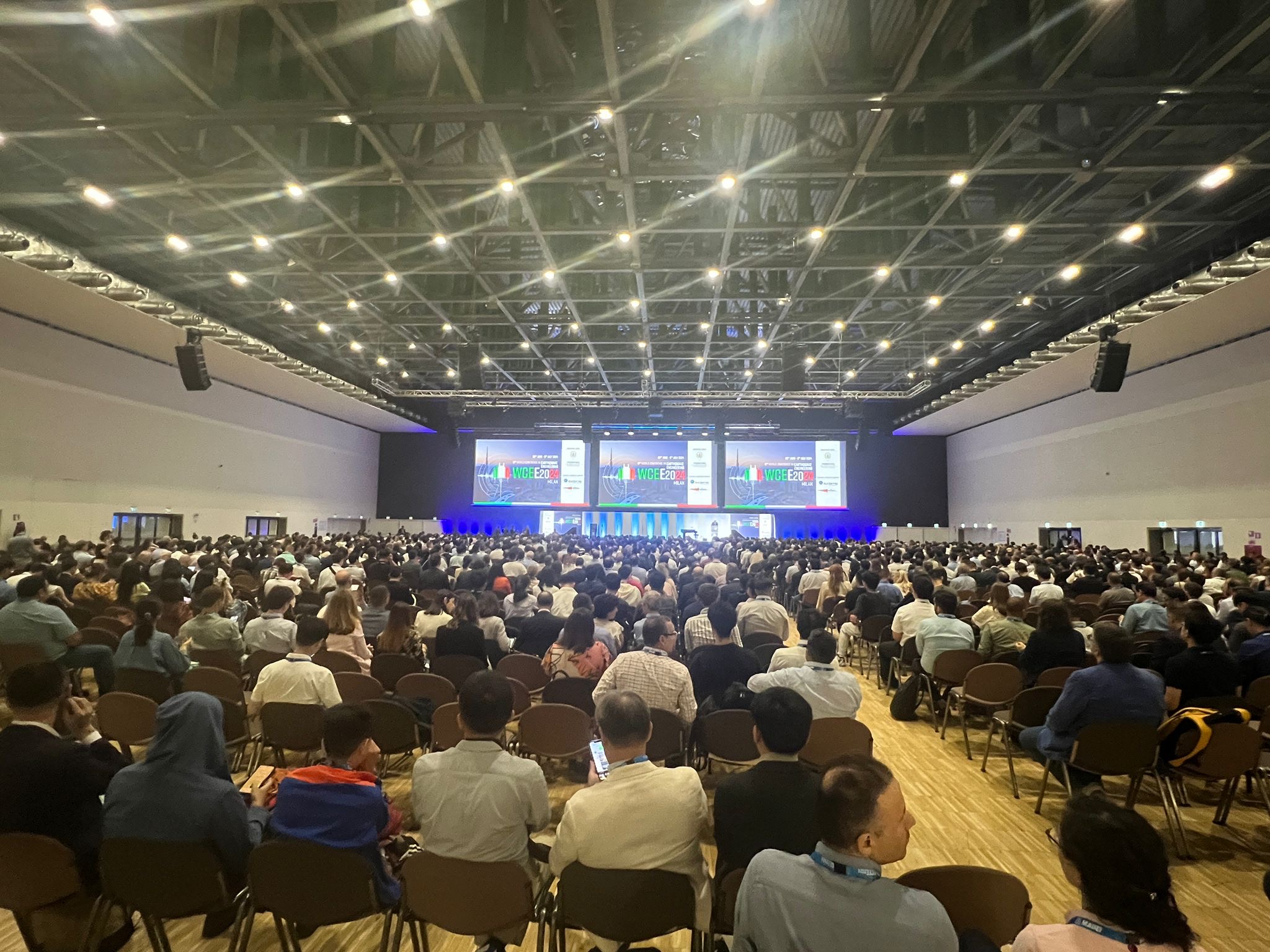
The 18th World conference in Earthquake Engineering was held from June 30th – July 5th 2024 in Milano, Italy. The majority of the members of the 2BESAFE research group attended the conference and contributed with conference papers. The conference was an international event with over 4000 participants from over 80 countries.
The 2BESAFE research group contributed with 7 conference papers related to numerical modelling of structural elements under seismic loads, development of fragility and vulnerability curves of typical buildings, reconstruction campaign and retrofitting measures undertaken after the earthquakes in Croatia in 2020, seismic behaviour of buildings built in row aggregates and seismic risk assessment at urban scale.
In particular, project lead assoc.prof. Mario Uroš presented a paper titled “Lessons learned from the devastating earthquakes in Croatia 2020” where he shared the practical Croatian experience in post-earthquake recovery after the Zagreb and Petrinja earthquakes of 2020 with the worldwide earthquake engineering community.
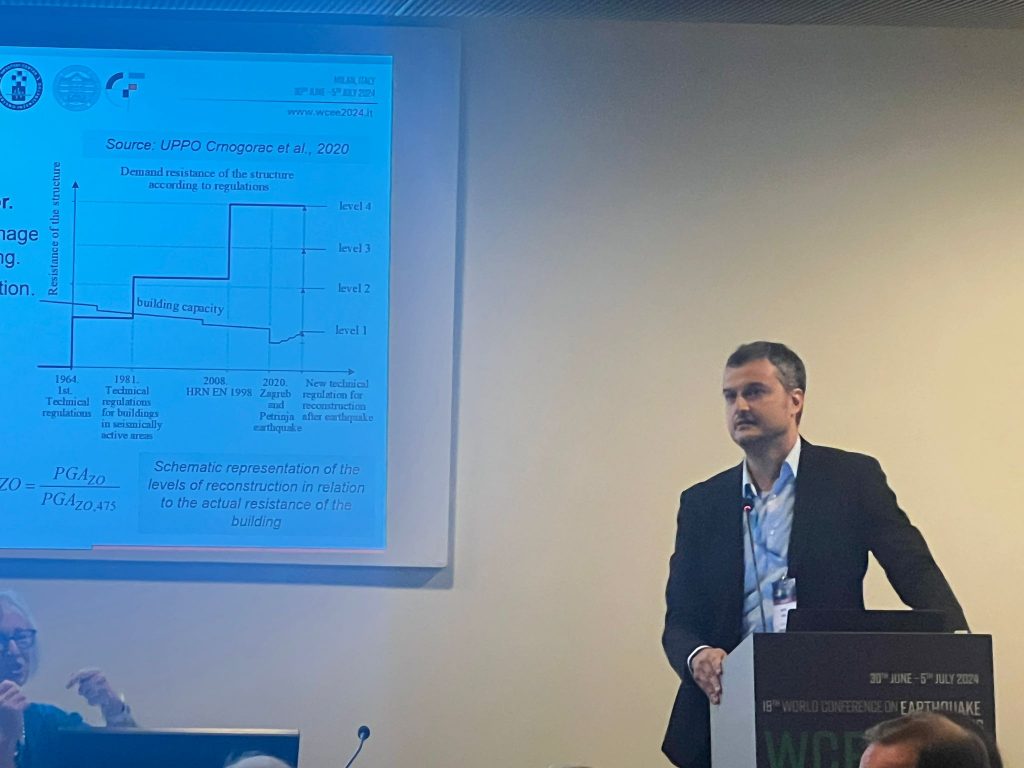
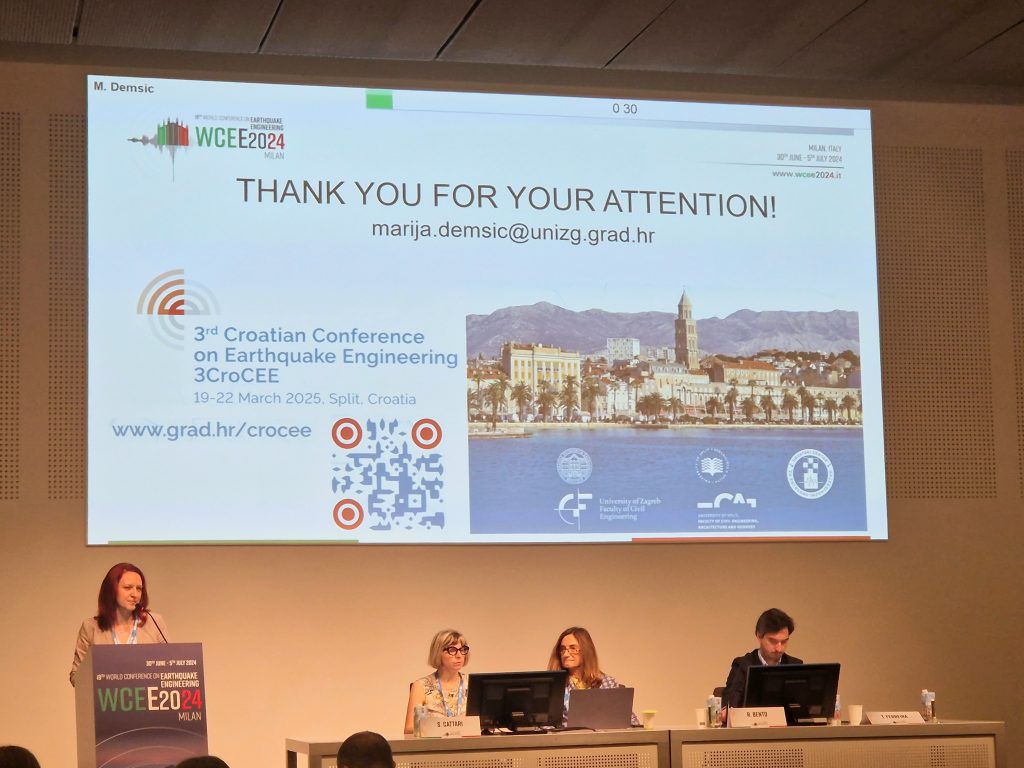
Assoc.prof. Marija Demšić presented a paper titled “Development of fragility curves of masonry buildings built in a regular row aggregate”, co-authored with the research group of prof. Serena Cattari of the University of Genova, where some of the methodology developed in the scope of the 2BESAFE project was used, especially with regard to seismic hazard and ground motion record selection.
Assoc.prof. Marta Šavor Novak presented the most important results of the Earthquake risk of Zagreb pilot project, in terms of main seismic risk assessment results for the city of Zagreb, under the title “The project Earthquake Risk Assessment of the City of Zagreb.”
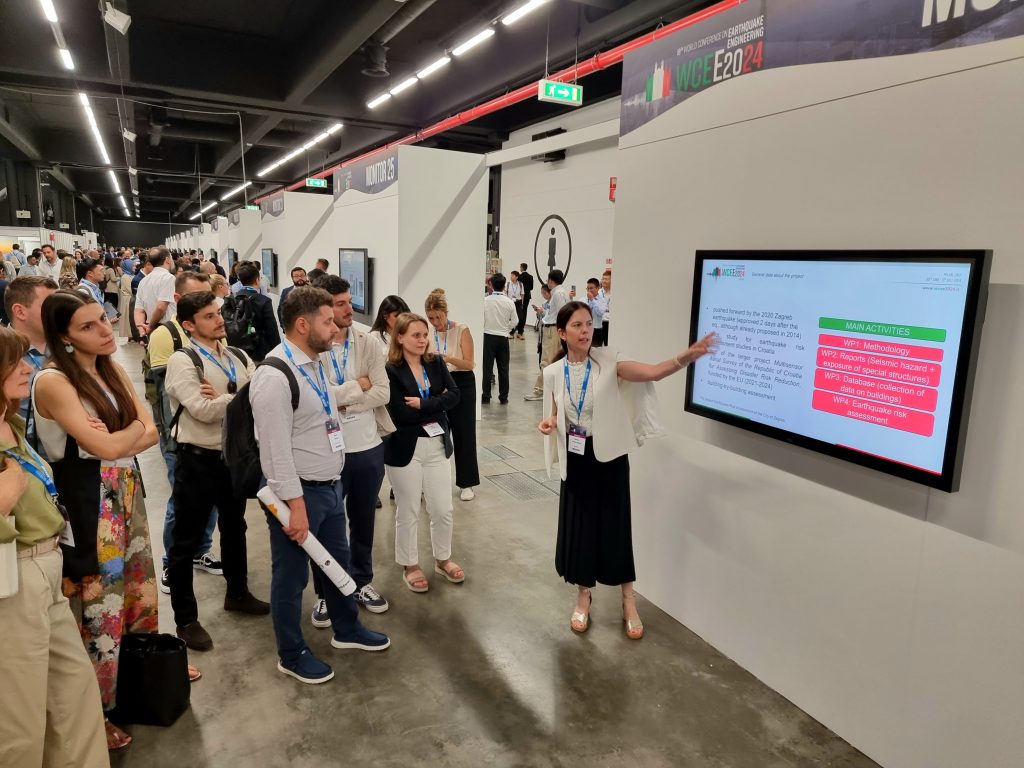
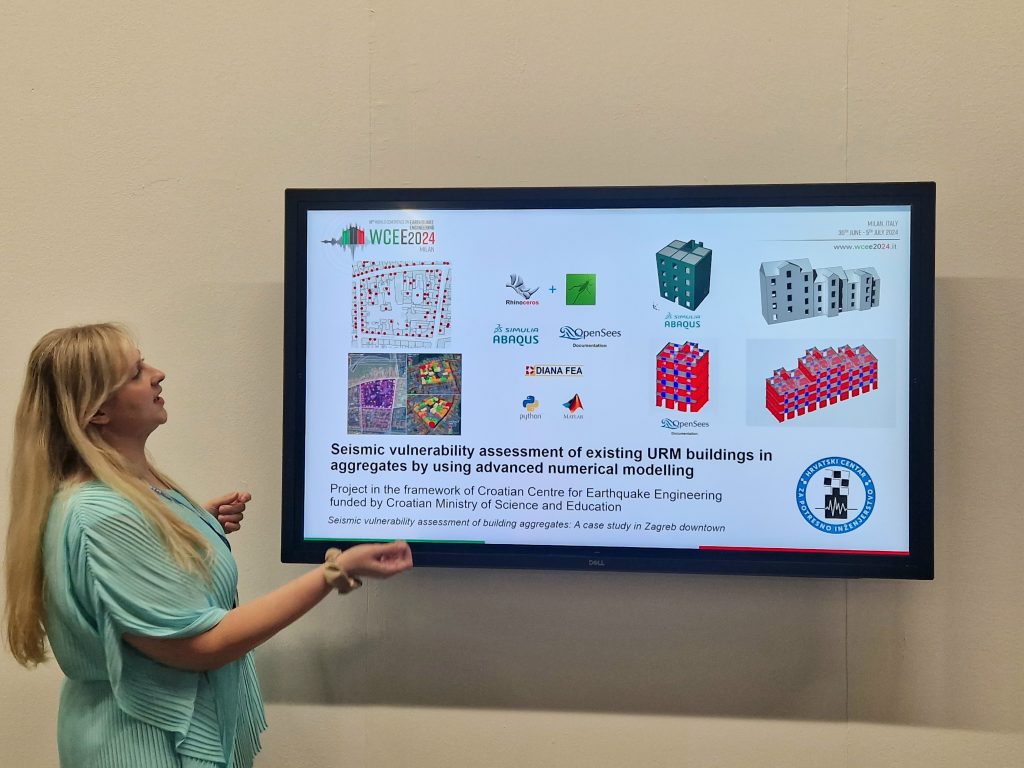
Research group member and postdoctoral researcher Maja Baniček presented a contribution titled “Seismic vulnerability assessment of building aggregates: a case study in Zagreb downtown”, where she presented the ongoing work in understanding the behaviour and interaction of unreinforced masonry buildings built in regular row aggregates, typical of the historical center of Zagreb.
Assoc.prof. Senad Medić of the 2BESAFE research group contributed with the paper titled “Nonlinear static and dynamic analysis of a typical pre-code URM building in Zagreb”, presenting the analysis procedures used throughout the project on a case study example.
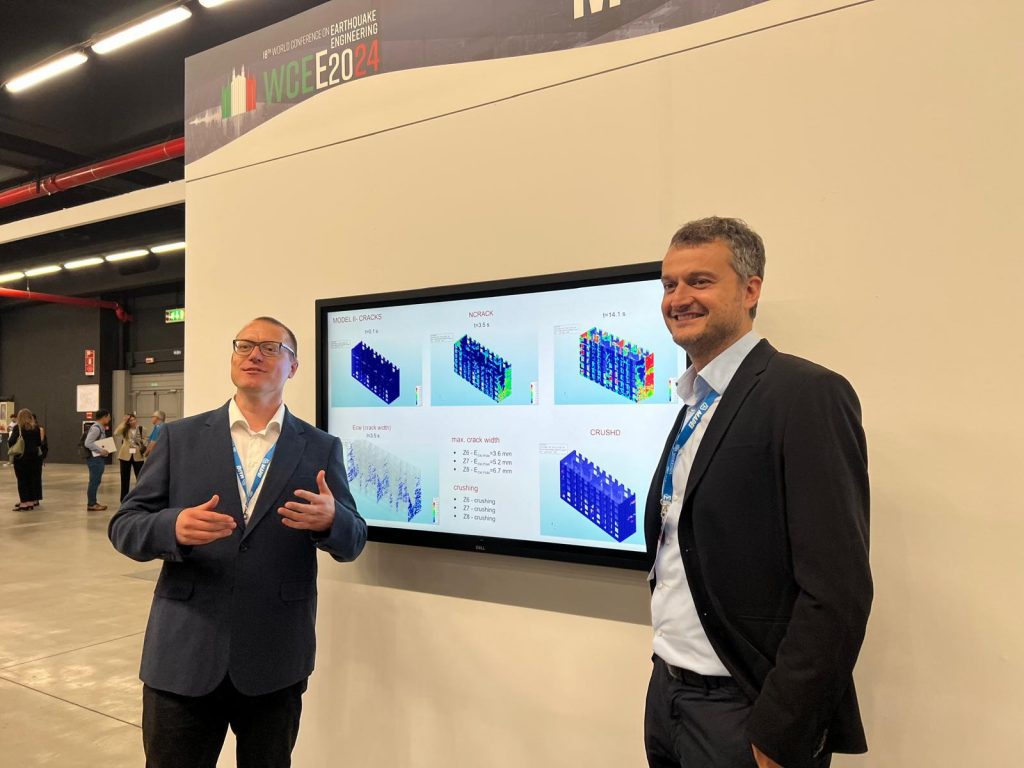
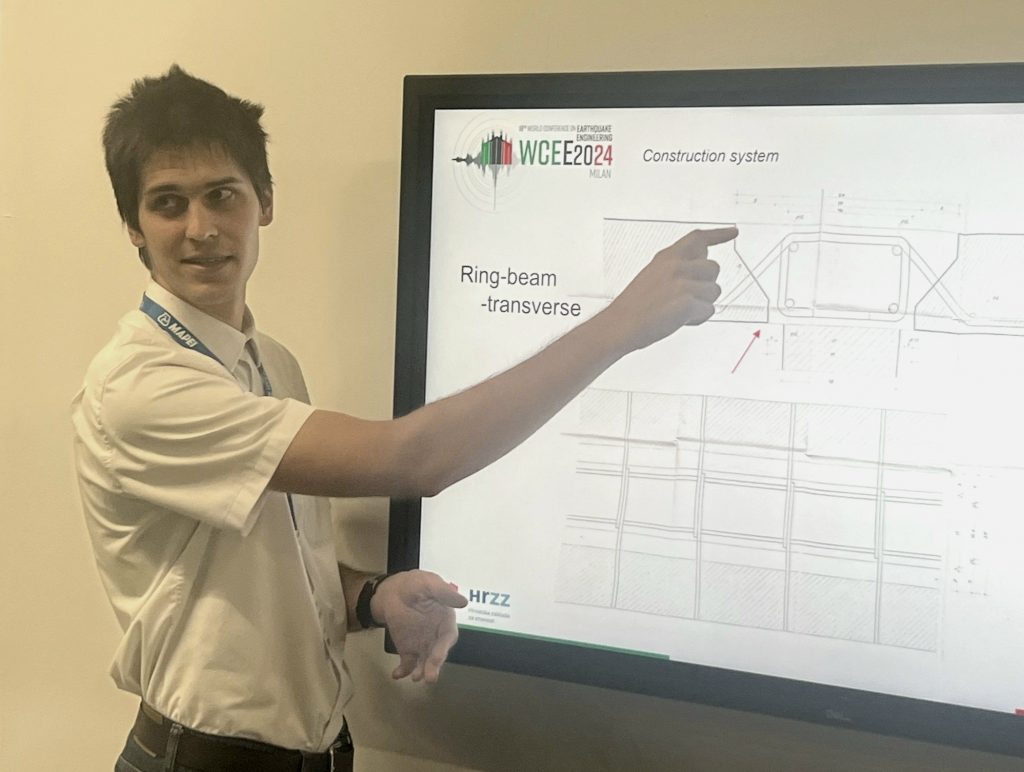
PhD researcher Romano Jevtić Rundek presented a paper titled ” Failure mechanism and load bearing capacity of a typical pre-code wall panel system”, where he showed the latest results from the ongoing research to better understand the behaviour of prefabricated panels in reinforced concrete building typologies that are part of the 2BESAFE project, through detailed modelling of panels and their interaction in Abaqus.
PhD researcher Ante Pilipović presented a paper titled “New vulnerability model of a typical unreinforced masonry building in the urban area of Zagreb”, where he showed the completed initial vulnerability model for an unreinforced masonry building typology that is a part of the 2BESAFE project, using a methodology that is going to be applied to all the buildings of the 2BESAFE project.
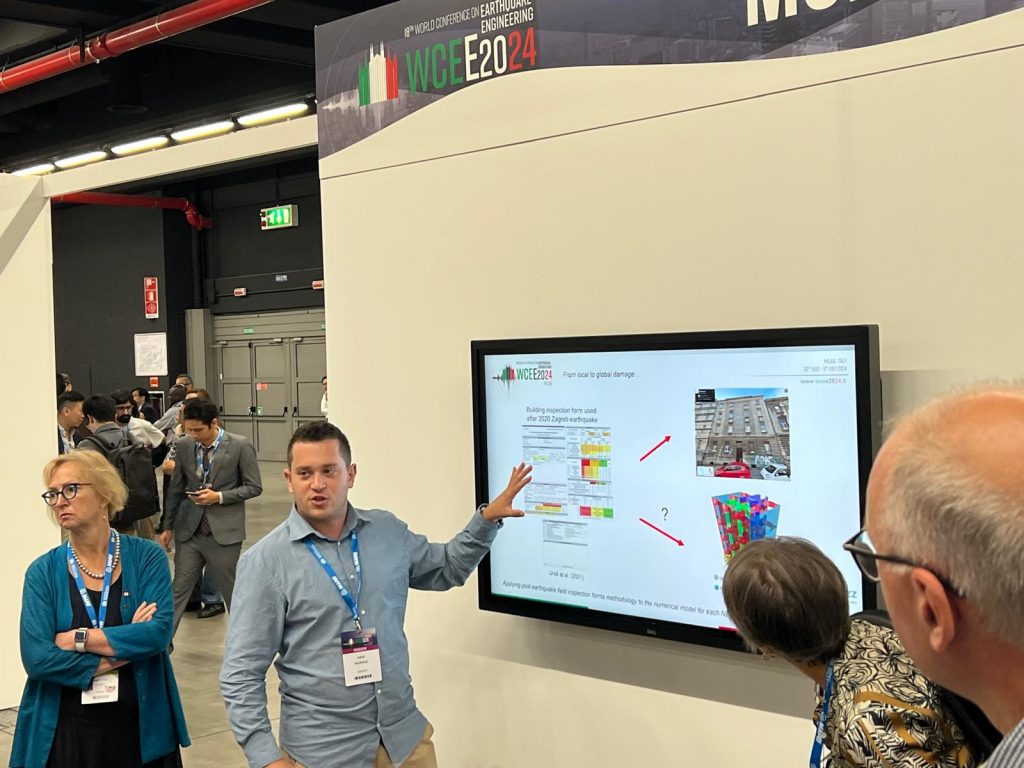
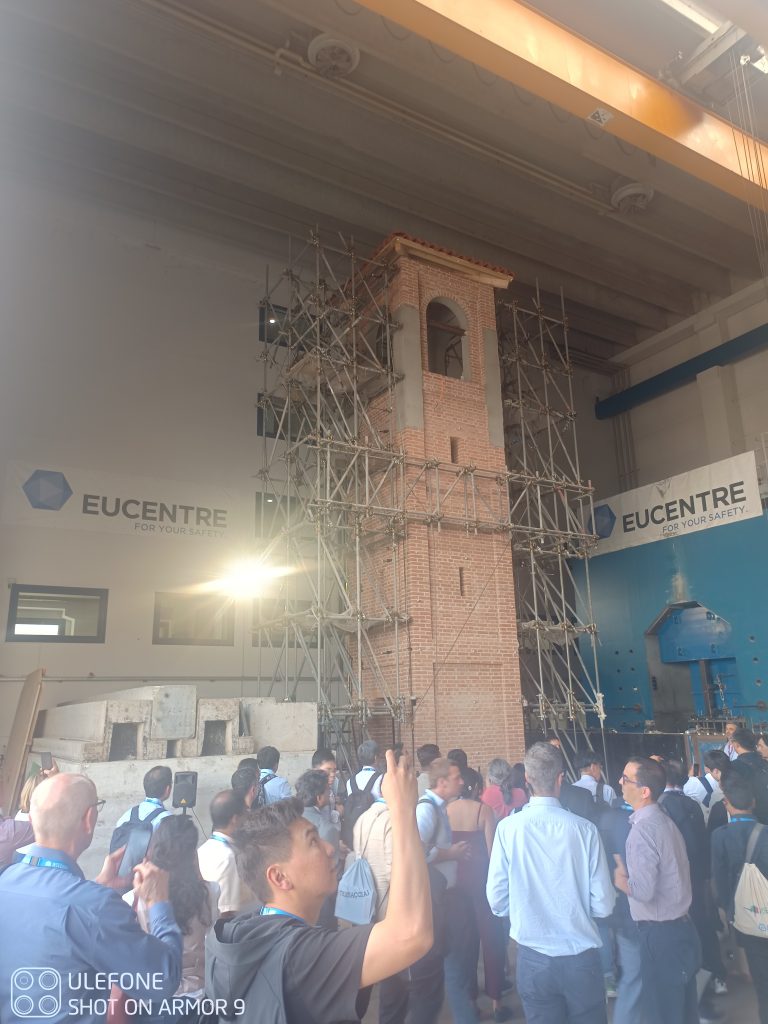
As part of the conference, multiple technical visits have been realized, including the EUCENTRE facilities in Pavia where many experimental campaigns are organized each year and behaviour of structural elements under static and dynamic seismic loads is being investigated, as well as the testing of downscaled 3D buildings under real time seismic loads.
Another technical visit to the ATM control room of the Milan metro presented a unique opportunity to learn about the inner workings of a complex metro coordination system.
The presentations and engagement in these topics inspired fruitful discussions and exchange with renown experts from the earthquake engineering community from the whole world. These discussions contributed to further development of the methodology for development of new vulnerability models for the building typologies that are the focus of the 2BESAFE project, particularly loss analysis and aggregating losses on element level, which constitutes the final step of deriving high fidelity vulnerability functions for the selected building typologies.
